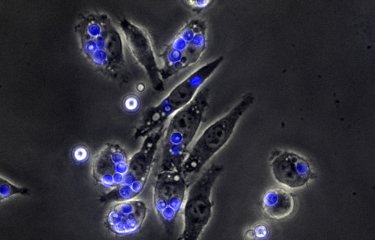Jean-Marc Collard (1) and Jean-François Jusot, published in The Journal of Allergy and Clinical Immunology, the results of a study demonstrating the association between meningitis and climate variations in sub- Saharan Africa.
Conducted while they were stationed in CERMES (Niger) in collaboration with the National Directorate of Meteorological of Niger and the University of Liverpool, this study combined on a daily scale climate and epidemiologic data over an 8-year period (between 2003 and 2010). Scientists have observed that high temperatures (>39.5°C) and high concentrations of airborne dust are significant risk factors in the increase of bacterial meningitis cases during outbreaks. Following a meeting with Aras Kadioglu, his team in Liverpool then, completed these observations by showing that exposure to these same factors, promoted progression to invasive disease in mice bearing asymptomatic pneumococcus.
This link had already been observed by General Doctor Leon Lapeyssonnie and reported in 1963 in a publication as endemic and sporadic cycle seasonally reinforced.
This study shows the importance of climate, epidemiological and microbiological surveillance to predict and detect the emergence of invasive bacterial epidemics but also the need to implement preventive measures to reduce their impact.
According to the latest IPCC ( Intergovernmental Panel on Climate Change ), the global atmospheric temperature could rise by 6 ° C by the end of the century, raising fears of a sharp increase in cases of meningitis in the Sahel, region which is currently the most affected by the epidemic, in the world.
(1) Jean-Marc Collard is now the Head of Experimental Bacteriology Unit at the Institut Pasteur in Madagascar.
--------
Updated on 26/07/2016





